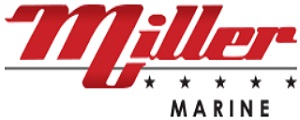anthony, 21ftcc, this was before I photographed all the work we do here. I'll have to draw the details and at current work load that won't be soon. Back to 12's and 14' to play catch up for the last two quarters of a 'dry spell' and that crowds the drawing time.
I have linked to some illustrations of a port light frame I did some years ago as part of a discussion of an offshore sailboat. The reason these are here is the ideas are identical even if the arrangement shown is tapered inside instead of straight.

I suggested pipe, here is a concentric reducer but the ideas remain the same.

the pipe segment would be cut to the thickness of the stern mount minus the two plates, inside and outside.


again, to make sure we all see why these illustrations bear on our discussion: this concentric reducer would be a pipe segment of several different diameters of pipe cut to length AND to corner angles that would turn each corner in the stern drive cutout outline.

Here I'm building a tapered inside surface, but the stern drive opening could/would be straight or 90 deg to the two inside and outside surfaces of the hollow transom mounting 'box'. The blue/purple plate would NOT be in a stern mount box.

IN the stern mount plate/box the blue glass mounting plate is not included.

shown for a weld prep detail not for a stern mount plan!


These last two images show the inside and outside plates, in a stern mount they'd be much larger and reach from the bottom upward in many cases. Depending on the hull shape this hollow box would weld to the bottom and may have the V of the hull built in to the outside of the box: WHICH IS NOT SHOWN.
There needs to be a surrounding edge band identical to the outside shape but with the same inside-edge-to-inside-edge fit providing a weld groove for the hollow box's edge seal weld.
The pipes/tubes would be located around the opening for the drive's shaft and steering arms and recess socket welded into the two green plates in these substitution illustrations.
The blue/purple plate, shown here, does not apply; the images show a tapered port light hull recess and
not an outdrive transom mount box to bolt the drive onto the hull- so the tapered opening has to been made parallel including adding and outside band welded to the entire assembly to make a 2" (as needed) thick box to bolt the drive leg too.
[I did use this tapered sided opening, design method, on the top of two transom plates for the 'upper' opening that the steering arm came through. this allowed the seals to be closer to the travel of the arm as the opening was wider inside the hull than outside on the outdrive side.]
I hope this helps, with my earlier post, to give a picture of the methods I've used? By shaping the outline of the panel to fit the hull you might extend the bottom to the keel and V of the hull, the top to whatever design element is above and the sides can be as narrow or wide as needed to give access to the drive's mount bolts and hardware.
I do the entire box with MIG tacks and TIG beads but I have built them with MIG, and just floated the corners at the air test stage. I generally tap a small 1/4" pipe thread opening in the stern lowest point to insure the box can be drained/checked when the hull is out of the water. That opening also serves as the air test point.
Cheers,
Kevin Morin










